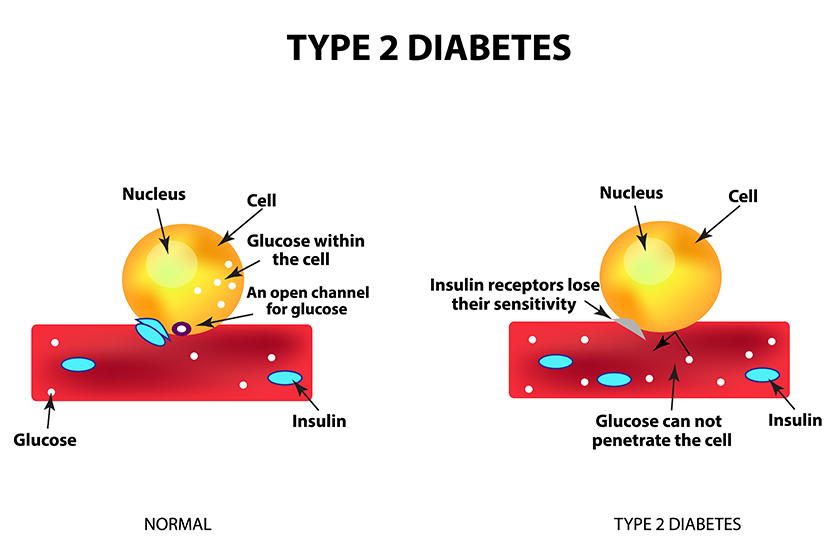As you consider health options for yourself or loved ones, understanding the early signs of type 2 diabetes is key. This condition affects blood sugar regulation and often develops gradually, making it easy to miss the early symptoms. Recognizing these signs early can help you or someone you care about seek medical advice and make lifestyle adjustments to manage health more effectively.
Increased Thirst and Frequent Urination
An early and noticeable sign of type 2 diabetes is feeling unusually thirsty alongside frequent trips to the bathroom. Elevated blood sugar levels cause the kidneys to work overtime to remove excess sugar from the bloodstream, leading to increased urination. This frequent loss of fluids can leave you persistently thirsty, even if you are drinking more than usual. If you notice this ongoing cycle of thirst and frequent urination, it may be a signal to consult a healthcare provider for further evaluation.
Recognizing these symptoms early can be beneficial in a retirement community. By identifying changes in hydration needs and bathroom habits, you may be able to take preventive steps with your healthcare provider. Being proactive with health changes helps support a more comfortable daily routine.
Unexplained Fatigue
Fatigue is a common symptom of many conditions, but when paired with others, it may signal type 2 diabetes. High blood sugar makes it harder for the body to use glucose for energy, leading to persistent tiredness that doesn’t improve with rest. This can disrupt daily life and reduce overall enjoyment.
In retirement communities, addressing unexplained fatigue is vital for maintaining a good quality of life. Consulting a healthcare provider about ongoing low energy levels can help identify and manage this symptom before it worsens.
Blurred Vision
Blurred vision can be an early warning sign of type 2 diabetes due to high blood sugar levels affecting the shape of the eye’s lens. When blood sugar fluctuates, it can alter fluid levels in the body, including those within the eye, leading to vision changes. This may not be a constant issue, but it is something to watch out for, especially if there is no other explanation for blurred vision.
If you or someone in your family notices vision changes, it may be a good idea to consult with an eye specialist. Early intervention can help preserve eye health and support daily activities that rely on clear vision.
Slow-Healing Wounds
When the body has trouble regulating blood sugar, it also struggles with healing wounds effectively. High blood sugar can lead to poor blood circulation, making it harder for nutrients and oxygen to reach wounds and support the healing process. Cuts, bruises, or sores that do not heal within a typical timeframe could indicate an underlying issue with blood sugar levels.
If you are involved in a services & amenities program that provides wellness support, you may have resources available to monitor any ongoing changes like slow-healing wounds. Taking note of delayed healing and seeking advice can help manage health concerns before they progress.
Tingling or Numbness in Extremities
High blood sugar levels can damage nerves, leading to sensations of tingling or numbness in the hands and feet. This condition, called neuropathy, often starts gradually and may worsen over time if left untreated. Early signs of tingling or numbness, particularly when paired with other symptoms, may indicate type 2 diabetes and warrant a visit to a healthcare provider.
Unintentional Weight Loss
Unexpected weight loss can be a surprising symptom of type 2 diabetes. If the body is unable to access glucose as a source of energy due to high blood sugar, it may start to break down muscle and fat instead. This process can lead to weight loss even if appetite remains normal or increases.
If weight changes occur without an obvious reason, speaking with a healthcare provider can help address concerns and determine if further testing is necessary. In many respite care settings, health check-ups are routine, helping residents track these changes closely.
Frequent Infections
Type 2 diabetes can make individuals more susceptible to infections, especially in areas like the gums, skin, and urinary tract. High blood sugar can weaken the immune system, making it harder for the body to fight off infections. Recurring infections, even minor ones, might be a sign to watch for and discuss with a healthcare provider.
Frequent infections can impact daily activities and comfort, so identifying these symptoms early allows for a more proactive approach to health.
Staying Proactive with Your Health
Being aware of the early signs of type 2 diabetes allows you to take an active role in your health. Recognizing changes in thirst, energy levels, vision, wound healing, sensation, weight, and infection frequency can lead to timely conversations with healthcare professionals, improving the ability to manage and enhance quality of life.
Within our retirement community, we offer a variety of resources to support proactive health monitoring and symptom management. Our team is dedicated to creating a balanced, health-focused environment with access to wellness programs and compassionate care. By focusing on these early signs, you or your loved ones can maintain an active, comfortable lifestyle with the support and encouragement of our community. Reach out to learn more about our supportive approach to you or your loved one.







